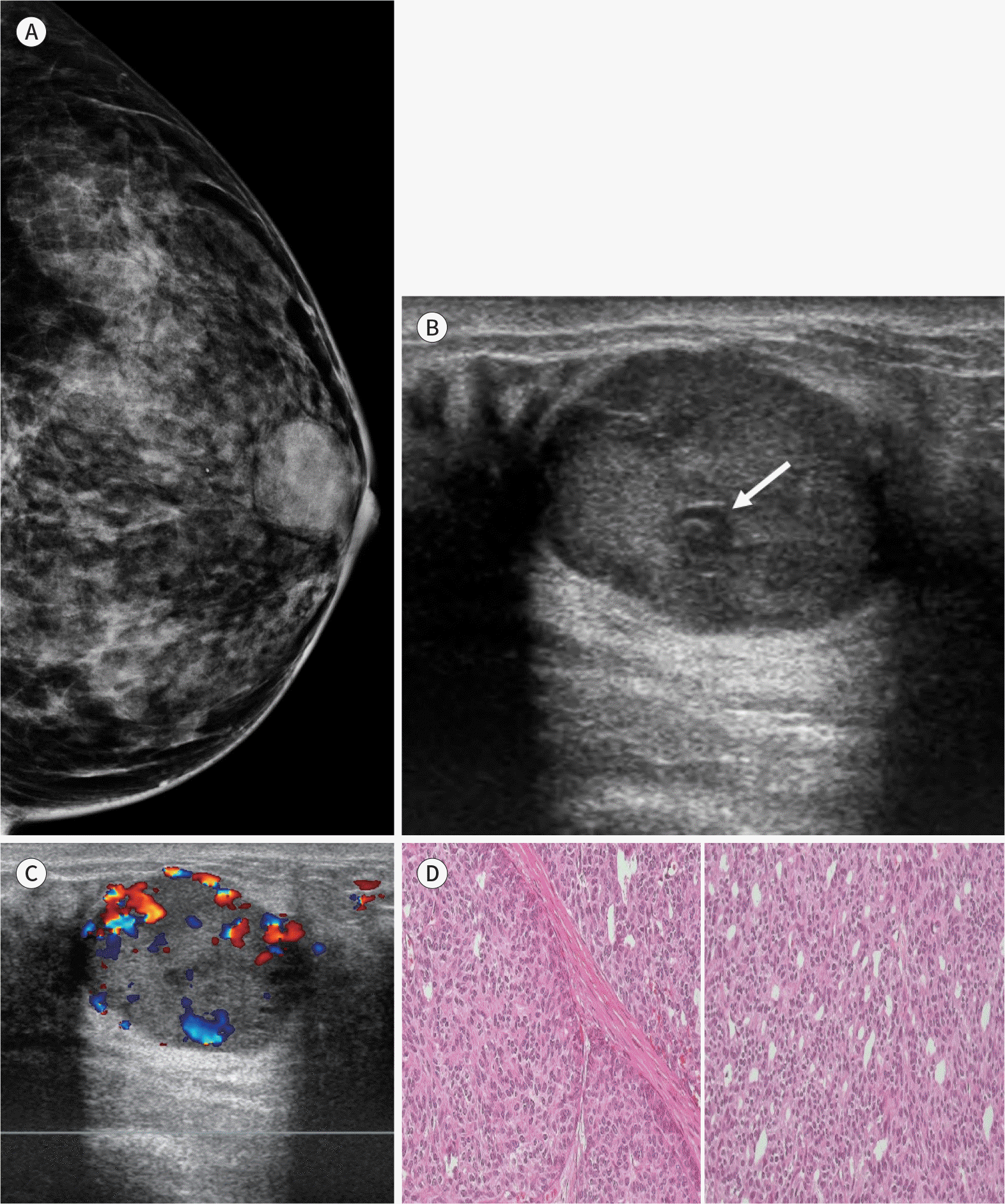Abstract
Primary breast carcinoma with neuroendocrine features is an extremely rare and underrecognized subtype of the breast carcinoma. And up to present, its biologic behavior, the most effective treatment, and prognosis are not well recognized. To diagnose this rare entity, special tumor stains of neuroendocrine markers are required, which are not routinely used. The imaging features of primary breast carcinoma with neuroendocrine features (BCNF) have not been accurately described due to the extreme rarity of this tumor type. We report the imaging features in a case of BCNF, with imaging findings different from the typical imaging findings of invasive breast carcinoma.
References
1. Böcker W. [WHO classification of breast tumors and tumors of the female genital organs: pathology and genetics]. Verh Dtsch Ges Pathol. 2002; 86:116–119.
2. Sinn HP, Kreipe H. A brief overview of the WHO classification of breast tumors, 4th edition, focusing on issues and updates from the 3rd edition.Breast Care (Basel). 2013; 8:149–154.
3. Tang F, Wei B, Tian Z, Gilcrease MZ, Huo L, Albarracin CT, et al. Invasive mammary carcinoma with neuroendocrine differentiation: histological features and diagnostic challenges.Histopathology. 2011; 59:106–115.
4. Chang ED, Kim MK, Kim JS, Whang IY. Primary neuroendocrine tumor of the breast: imaging features.Kore an J Radiol. 2013; 14:395–399.
5. Park YM, Wu Y, Wei W, Yang WT. Primary neuroendocrine carcinoma of the breast: clinical, imaging, and histologic features. AJR Am J Roentgenol. 2014; 203:W221–W230.

6. Lee DH, Park AY, Seo BK, Kim YS, Lee KY, Cha SH. Primary neuroendocrine carcinoma of the breast with clinical features of inflammatory breast carcinoma: a case report and literature review.J Breast Cancer. 2015; 18:404–408.
7. Yoon YS, Kim SY, Lee JH, Kim SY, Han SW. Primary neuroendocrine carcinoma of the breast: radiologic and pathologic correlation.Clin Imaging. 2014; 38:734–738.
8. Zhang Y, Chen Z, Bao Y, Du Z, Li Q, Zhao Y, et al. Invasive neuroendocrine carcinoma of the breast: a prognostic research of 107 Chinese patients. Neoplasma. 2013; 60:215–222.
9. Wei B, Ding T, Xing Y, Wei W, Tian Z, Tang F, et al. Invasive neuroendocrine carcinoma of the breast: a distinctive subtype of aggressive mammary carcinoma.Cancer. 2010; 116:4463–4473.
Fig. 1.
A 47-year-old woman with palpable lump in the left breast. A. Left craniocaudal mammogram shows a 2.7 cm sized, oval isodense mass with circumscribed margin in the sub-areolar region of upper outer quadrant. B. Ultrasonography reveals circumscribed oval hypoechoic mass with posterior enhancement and cystic foci (arrow). C. Color Doppler exam shows increased vascularity of the lesion. D. Microscopic sections of left breast nodule show the tumor consisting of cellular nests and trabeculae of tumor cells, with spindle to ovoid cells in rosette formation (hematoxylin-eosin stain; left panel × 200, right





 PDF
PDF ePub
ePub Citation
Citation Print
Print



 XML Download
XML Download